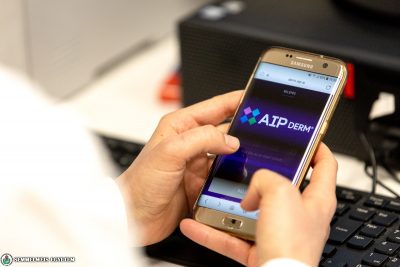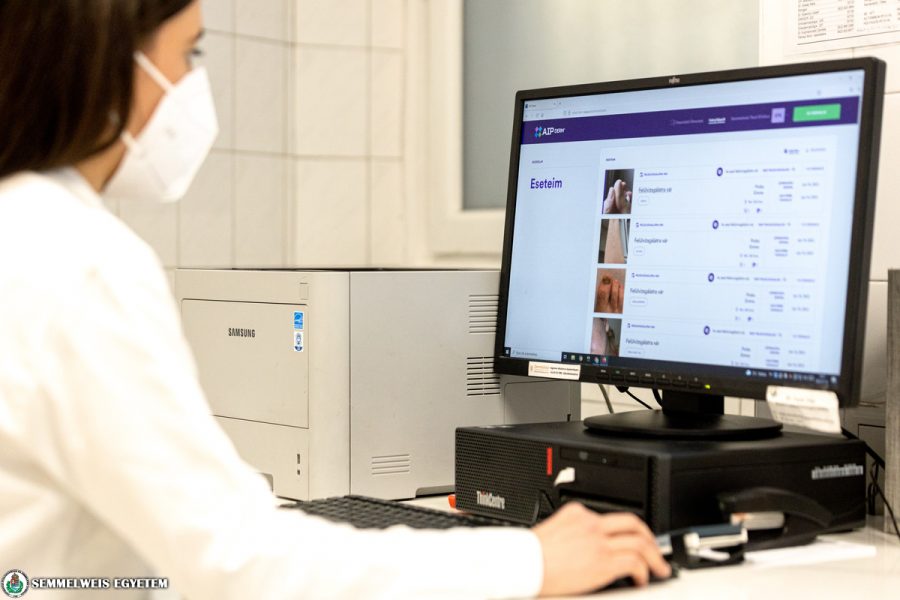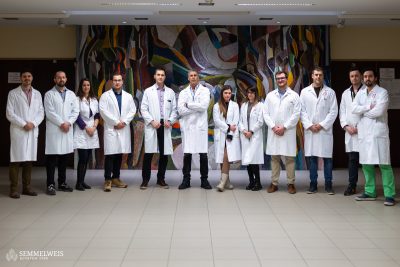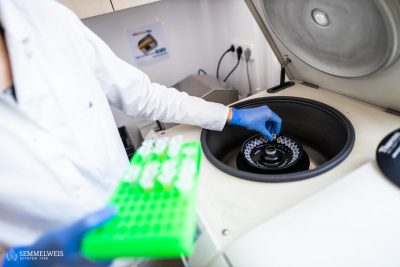The artificial intelligence-based teledermatology service has been available free of charge since 24 March for those with valid insurance throughout the country. By mid-May, nearly 10,000 people had registered and uploaded images of their skin lesions.
The diagnosis made by the artificial intelligence (AI) is always approved by a dermatologist, while the software prioritizes incoming cases and gives a differential diagnosis. Initial experience shows that the AI correctly identified the lesion in 90 percent of cases. Máté Kovács stressed that the system is working as expected.

With the state-of-the-art technology patients requiring urgent care can be identified quickly and easily, and more incoming patients can be attended with far fewer resources, reducing waiting and diagnosis times. There are users from all age groups, from all parts of the country, including patients who would not otherwise have access to medical care or would have received it much later,” he said.
At the Department of Dermatology, Venerology and Dermatooncology of Semmelweis University, currently, 10 specialists are involved in the operation of the system, who, depending on the workload, diagnose and make therapeutic recommendations in an average of three to six days to the patients who send in the images, said Dr. Adrienn Poór, assistant professor. In her experience, the artificial intelligence-based decision support system has been working well so far, saving time and speeding up care.
On average, a doctor can see 20-40 cases in an hour. The outcome can be one of four types: no action, prescription of over-the-counter or prescription medicine, or a personal consultation. However, according to Dr. Adrienn Poór, there is something to do for almost all submitters.
A similar statement was made by Dr. András Bánvölgyi, assistant professor and head of the general outpatient clinic of the Department. If a personal consultation is required based on the submitted photo, the patient concerned has the option of visiting the university clinic or the care center of the place of residence.
However, in more serious cases, such as suspected melanoma malignancy, they specifically encourage you to go to a clinic or other university centre.
The specialists believe that patients appreciate the service and are happy to have the opportunity. There have been patients who have been referred for suspected skin tumours on admission who, by their own admission, would not have gone to see a doctor if it had not been for this preliminary teledermatology facility, they report.
The specialists believe that patients appreciate the service and are happy to have the opportunity. There was a patient admitted on suspected skin tumors who would not have gone to see a doctor if it had not been for this preliminary teledermatology facility, they report.
Pálma Dobozi
Translation: Gábor Kiss
Photo: Attila Kovács – Semmelweis University



